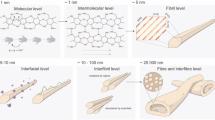Abstract
Graft polymerization technology is a good way to modify polymers. New functional groups are added to polymer structure using graft polymerization. Enzyme immobilization could be done from these added functional groups. Ethyl cellulose was selected as a support for enzyme immobilization and no many studies has been conducted about it. It is insoluble in water and suitable for reuse. In this study, methacrylic acid was graft polymerized to ethyl cellulose using benzophenone. In graft polymerization studies, optimum amounts of methacrylic acid and benzophenone were determined as 60 mmol and 0.6 g, respectively. Percentage of graft polymerization was maximum in toluene as solvent and optimum graft polymerization time was found as 3 hours. The graft polymerization percentage was 225.7 % at optimum conditions. This value was very good for UV-induced graft polymerization technique. FT-IR spectra of ethyl cellulose and methacrylic acid graft polymerized ethyl cellulose showed that graft polymerization was carried out successfully. -COOH groups were added to ethyl cellulose structure after graft polymerization. Then, urease was immobilized to methacrylic acid graft polymerized ethyl cellulose using 1-ethyl-3-(3-dimetylaminopropyl)-carbodiimide as the condensing agent which accelerates the reaction between -COOH from methacrylic acid graft polymerized ethyl cellulose and -NH2 from urease. Optimization studies were also performed for the immobilization of urease. Optimized values for urease immobilization; optimum amount of 1-ethyl-3-(3-dimetylaminopropyl)-carbodiimide was found as 5 mg, temperature was determined as 37 °C, 2 hours were selected as optimum time, pH and amount of urease were found to be pH 7 and 10 mg, respectively. Remained activity of immobilized urease was 1.74 % before optimization studies. After optimization of immobilization studies, this ratio has increased to 29.85 %. The immobilized urease activity was increased 17.2 times.
Similar content being viewed by others
References
P. Ye, Z. K. Xu, A. F. Che, J. Wu, and P. Seta, Biomaterials, 26, 6394 (2005).
A. Akkaya and A. H. Uslan, J. Mol. Catal. B-Enzym., 67, 195 (2010).
H. Kobayashi and Y. Ikada, Biomaterials, 12, 747 (1991).
T. Okada and Y. Ikada, J. Biomed. Mater. Res., 26, 1569 (1992).
E. Behm, P. Ivanovich, and H. Klinkmann, Int. J. Artif. Organs., 12, 1 (1989).
J. E. Frew and H. A. O. Hill, Anal. Chem., 59, 933 (1987).
F. N. Onyezili and C. Akintunde, Anal. Chem., 113, 203 (1981).
I. Ikeda, H. Ando, and K. Suzuki, Sen-i Gakkaishi., 42, T362 (1986).
M. Nakajima, A. Watanabe, N. Jimbo, K. Nishizawa, and S. Nakao, Biotechnol. Bioeng., 33, 856 (1989).
P. Monsan, D. Combes, and I. Alemzadeh, Biotechnol. Bioeng., 26, 658 (1984).
I. Marinov, K. Gabrovska, J. Velichkova, and T. Godjevargova, Int. J. Biol. Macromol., 44, 338 (2009).
S. Sano, K. Kato, and Y. Ikada, Biomaterials, 14, 817 (1993).
E. T. Kang, K. G. Neoh, K. L. Tan, Y. Uyama, N. Morikawa, and Y. Ikada, Macromolecules, 25, 1959 (1992).
R. Mazzei, G. G. Bermúdez, N. Betz, and E. Cabanillas, Nucl. Instrum. Methods. Phys. Res. Sect. B., 226, 575 (2004).
J. M. Han, X. X. Wang, and H. L. Wang, J. Colloid Interface Sci., 326, 360 (2008).
M. H. Casimiro, M. L. Botelho, J. P. Leal, and M. H. Gil, Radiat. Phys. Chem., 72, 731 (2005).
L. S. Shi, Eur. Polym. J., 36, 2611 (2000).
J. Zhu, X. T. Dong, X. L. Wang, and Y. Z. Wang, Carbohyd. Polym., 80, 350 (2010).
E. A. Abdel-Razik, J. Photoch. Photobio. A., 107, 271 (1997).
T. T. Ngo, A. P. H. Phan, C. F. Yam, and H. M. Lenhoff, Anal. Chem., 54, 46 (1982).
Z. G. Wang, L. S. Wan, and Z. K. Xu, J. Membrane Sci., 304, 8 (2007).
H. M. Ma, R. H. Davis, and C. N. Bowman, Macromolecules, 33, 331 (2000).
J. Deng, L. Wang, L. Liu, and W. Yang, Prog. Polym. Sci., 34, 156 (2009).
P. Calvini and A. Gorassini, Restaurator, 23, 48 (2002).
M. A. Bradford, Anal. Biochem., 72, 248 (1976).
O. H. Lowry, N. J. Rosebrough, A. L. Farr, and R. J. Randall, J. Biol. Chem., 193, 265 (1951).
T. E. Creighton, “Protein Function: A Pactical Approach”, pp.253–256, IRL Press, New York, 1990.
S. S. Wong, “Chemistry of Protein Conjugation and Crosslinking”, pp.39–40, CRC Press LLC: Department of Pathology and Laboratory Medicine University of Texas Health Science Center Houston, Texas, 1993.
K. Mosbach, Methods Enzymol., 44, 3 (1976).
L. B. Wingyard, “Applied Biochemistry and Bioengineering: Immobilized Enzyme Principles”, Academic Press Inc., 1976.
Author information
Authors and Affiliations
Corresponding author
Rights and permissions
About this article
Cite this article
Akkaya, A. Covalent immobilization of urease to modified ethyl cellulose. Fibers Polym 14, 22–27 (2013). https://doi.org/10.1007/s12221-013-0022-x
Received:
Revised:
Accepted:
Published:
Issue Date:
DOI: https://doi.org/10.1007/s12221-013-0022-x




